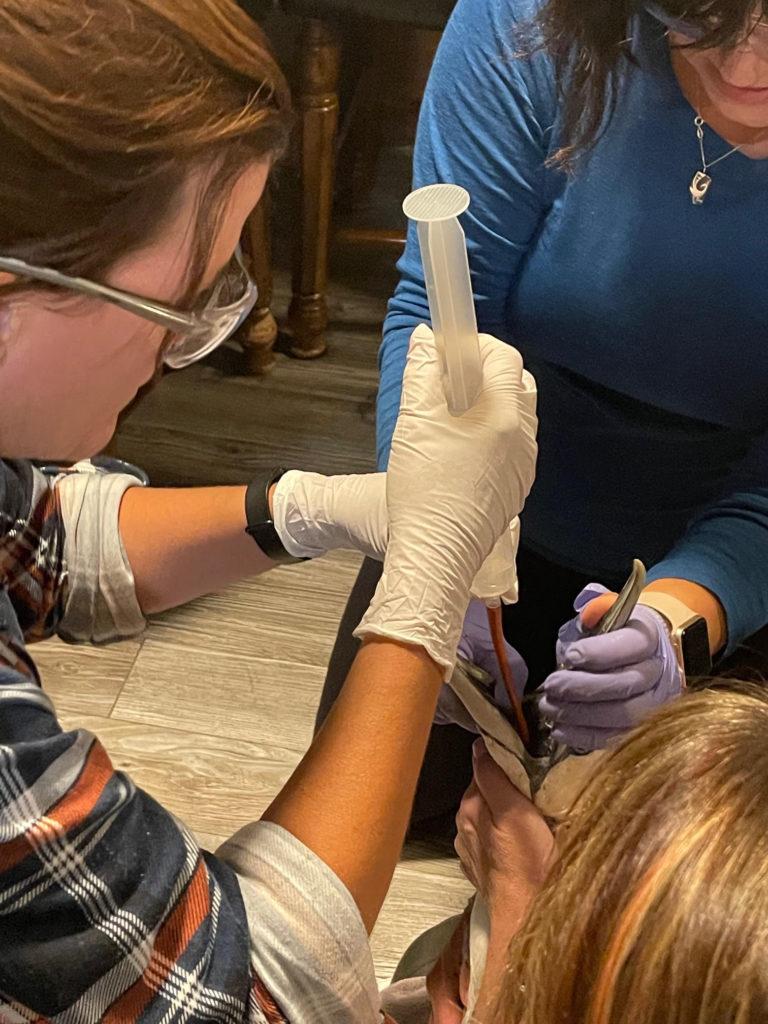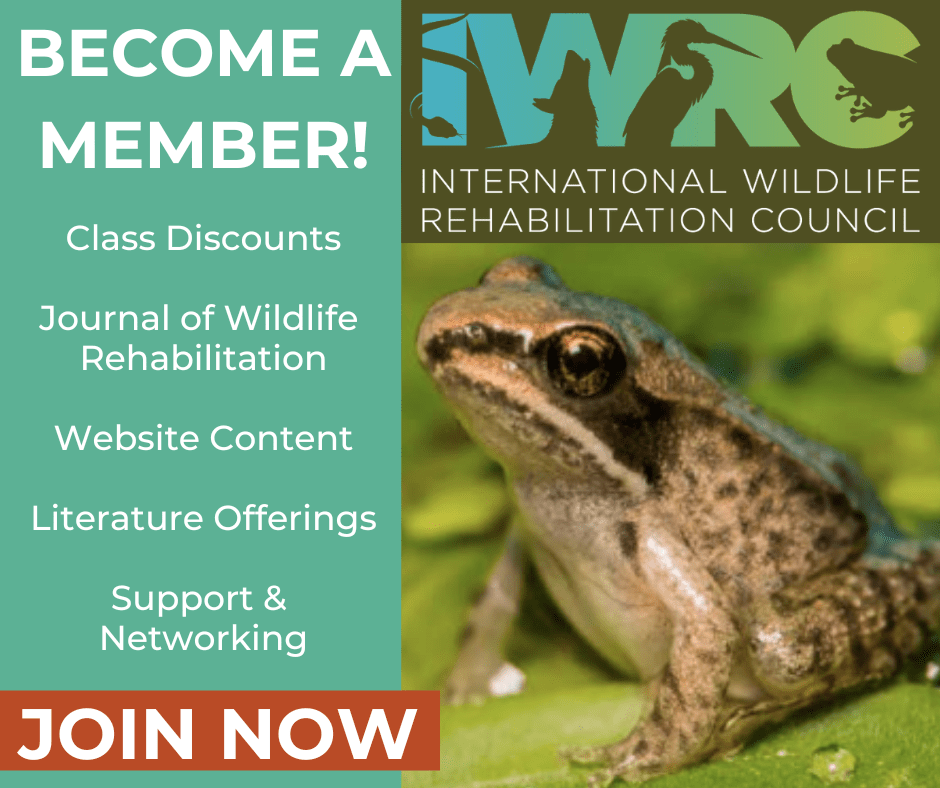Karen Gosse
Tell us a little about yourself:
I am the founder and director of The Rock Wildlife Rescue in Torbay, Newfoundland. With a family deeply involved in wildlife rescue and rehabilitation, my three children and I have dedicated our lives to this cause. My journey began with over 30 years of experience in domestic animal rescue before transitioning to wildlife rescue and rehabilitation in 2017. My commitment to wildlife care deepened through numerous volunteering and training missions in Central America, where I worked alongside wildlife veterinarians. These experiences, encompassing a vast range of species from seabirds, songbirds, birds of prey, to small mammals, primates, and various exotic species, were transformative. It was after one such trip that I recognized Newfoundland’s urgent need for a wildlife rehabilitation center. Motivated by this need, I founded The Rock Wildlife Rescue in 2020. My efforts were soon recognized with the issuance of a Federal migratory bird permit by the Canadian Wildlife Services, allowing me to care for injured and orphaned seabirds and other migratory birds. The support continued with the Provincial minister of wildlife granting us a permit to rehabilitate many provincially managed species, further enabling our mission to protect and restore wildlife in Newfoundland.
What is your fondest wildlife rehabilitation memory?
I have so many memorable experiences! However, one that particularly stands out is the day when three volunteers and I helped save and relocate a group of loons trapped in dense ocean pack ice in the spring of 2023. Such a rescue had rarely been attempted under those conditions. It was only through our collaboration over the phone with the Loon Preservation Committee in the United States that we devised a plan tailored to the unique challenges of rescuing this species from a bay congested with moving pack ice. I’m happy to report that we successfully rescued five loons and relocated them to open water. It was a long, exhausting, and amazing day! I will also never forget the time I rescued an infant howler monkey on the side of the road in Costa Rica during one of my volunteer trips. His mother had been electrocuted by the wires above, and we found him clinging to a mango.
What challenges have you faced in your wildlife rehabilitation work?
Being the first to create a wildlife rehabilitation center in a province with no existing legislation or framework for applying for permits or licenses was, to say the least, an uphill battle! I spent time consulting with others who had faced similar challenges in other provinces, like Hope Swinimer, the founder of the incredible ‘Hope for Wildlife’ rehabilitation center in Nova Scotia. She encountered these same issues when she began her journey over 25 years ago. She has been a wealth of information and a woman I greatly admire, someone I am fortunate enough to call a friend.
Has the IWRC aided in your journey as a wildlife rehabilitation? If so, can you explain how or give an example?
Being isolated from the rest of Canada, and without local sources of rehabilitation information, I have had to travel to gain most of my education and experience in the field of rehabilitation. Now, with access to educational materials, resources, and support provided by the International Wildlife Rehabilitation Council (IWRC), I can tap into the experiences of other rehabilitators. Additionally, I now have the means to encourage my volunteers to take advantage of the courses and materials that have been invaluable to me on my journey. Two of my main volunteers have since become certified through the IWRC and have gained significant confidence since doing so.
Tell us about your experience as a wildlife professional:
Situated on the easternmost tip of Canada, Newfoundland is an island renowned for its numerous breeding seabird populations. At our center, we focus not only on rehabilitating these species but also on providing education to prevent human interference. We collaborate with biologists and other wildlife agencies to protect vulnerable species, working together to safeguard our island’s unique wildlife heritage.
What brought you into wildlife rehabilitation work?
As a small child, I often brought home injured and orphaned animals, feeling a strong draw toward the species many people consider unworthy of our time or attention. With no access to wildlife rescue opportunities here in Newfoundland, I turned my efforts toward domestic rescue, aiding in the rescue of dogs and cats in our area. When I began to travel as an adult and saw the work that wildlife rehabilitators were doing in other parts of the world, I knew it was something I had to pursue. Regardless of the amount of work it would entail, or the number of roadblocks and barriers I might encounter, I was determined to make it happen. And that’s exactly what I did.
What wildlife species do you rehabilitate?
We rehabilitate seabirds, other migratory birds, various songbirds, and other avian species, along with beavers, hares, squirrels, and other small mammals. We have a soft spot for pigeons and actively advocate for the protection of these birds from ignorance and cruelty.
What common misconception about wildlife rehabilitation would you like to dispel?
The misconception about wildlife rehabilitation that I would like to dispel is the belief that ‘rehabilitators interfere with letting nature take its course.’ The reality is that the vast majority of the injured and orphaned wildlife we rehabilitate require intervention due to human interference. This includes encroaching on wild habitats with highways and residential homes, which escalates the number of vehicle strikes and human/wildlife conflicts. The construction of commercial structures in migratory flight paths results in a far greater number of window strikes. Additionally, light pollution along our coastline in Newfoundland confuses many fledgling seabirds, drawing them in and causing mass stranding events each year. Roaming pets, especially house cats, cause injuries to both wild birds and mammals—not to mention the cases of intentional harm and cruelty we encounter. This is not nature. We owe it to these animals to try to compensate for our interference and, at the very least, do everything in our power to mitigate the damage we have done. To ‘let nature take its course’ in these cases would be simply irresponsible.
What local, national, or international policy would you like to see that would support wildlife rehabilitation?
We need more acceptance and support from our government for wildlife rescue and rehabilitation. We offer a service that alleviates the burden on many departments, allowing them to redirect resources elsewhere. If direct support is not feasible, at the very least, please don’t hinder our efforts!
What do you hope for the future of wildlife rehabilitation?
I hope that someday, veterinary colleges and universities will include additional training to cover common wildlife species. This would benefit students who wish to aid our rehabilitation centers in the care of injured wildlife.
What message would you like to share with other IWRC members and wildlife rehabilitators across the world?
The support and collaboration of rehabilitators locally, nationally, and internationally are crucial in the evolution of wildlife rehabilitation. Sharing our experiences and knowledge with each other will benefit all wildlife in our care.
Are you passionate about wildlife conservation and rehabilitation? Consider becoming a member of the International Wildlife Rehabilitation Council (IWRC):
https://theiwrc.org/product-category/membership/
As a member of the IWRC, you’ll have access to a wealth of resources and support!




Leave a Reply
You must be logged in to post a comment.